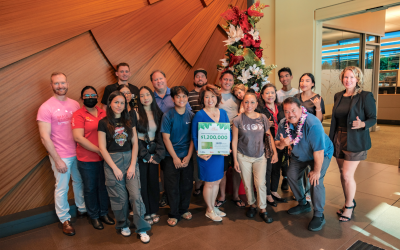
Dr. John E. Aoki, M.D. CHCQM, FABQAURP Chief Medical Officer
Working in the restaurant industry and handling the food that customers eat is a big responsibility. You are the first line of defense against customers being affected by food borne pathogens that would cause illness from bacteria like Salmonella and E. coli, as well as other parasites and viruses.
Washing your hands should always be the first step you take before handling food. Washing often and preparing food properly will help to reduce the risk of food poisoning. Raw meat, poultry, eggs, fish, and shellfish should always been stored away from other foods, surfaces, utensils, and serving dishes. Do not wash or rinse raw meat and poultry; doing so increases the risk of bacteria being transferred to other surfaces. When possible, use multiple surfaces or cutting boards for produce and raw meats. If there are not multiple surfaces available, be sure to wash surfaces and utensils with hot, soapy water between uses. Worn or cracked surfaces should be replaced when they become difficult to be effectively cleaned.
Raw fruits and vegetables should also be washed under running water before consuming or serving. All marinades should be done in covered container in the refrigerator and not left on the counter. Frozen meats should always be thawed in the refrigerator and not at room temperature, and should be stored below other food items.
If food has mold on it, do not smell it. Inhaling mold particles could lead to lung problems. Most foods that have mold growing on them should be immediately thrown away. These include breads, hot dogs, bacon, lunch meat, and other leftover cooked meat, grains and noodles, soft cheeses and other dairy products, nut butters (e.g., peanut butter and almond butter), and soft fruits and vegetables (e.g., peaches, tomatoes, and plums). A few foods that can still be consumed include hard salami and dry cured ham, cheeses made with mold (e.g., Bleu and Gorgonzola) and hard cheeses (e.g., Romano and Parmesan), and firm fruits and vegetables (e.g., cabbage and carrots). At least 1 inch should be cut from around and beneath the moldy area for cheeses and fruits/vegetables, and the mold should be scraped from hard/cured meats.
[dt_divider style=”thin” /]
Brought to you by HMAA, where we’re passionate about your health. To find out more about the HMAA health plan, visit hmaa.com or contact our Customer Service Department. HMAA also offers a suite of free wellness services including more Health Articles, Online Workshops, Health Coaching and Biometric Screenings available to all HMAA members. For more information on our menu of wellness services, please contact Naomi Azama at (808) 791 -7607 or nazama@hmaa.com
Source: Lifeworks.com





0 Comments